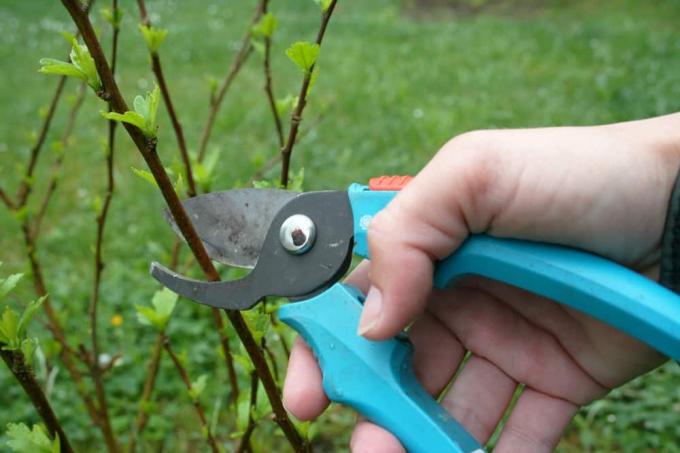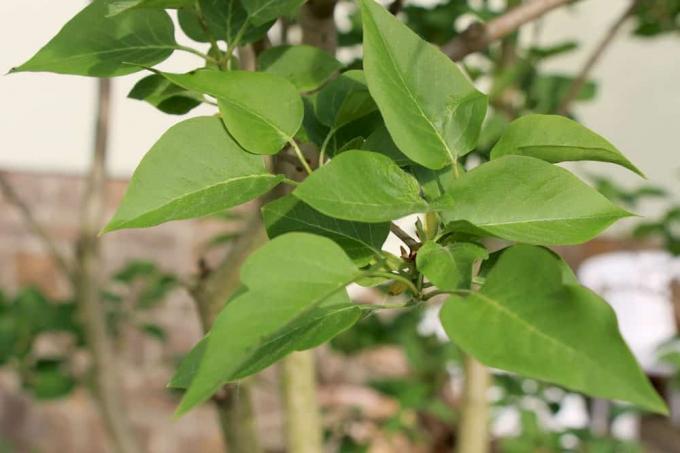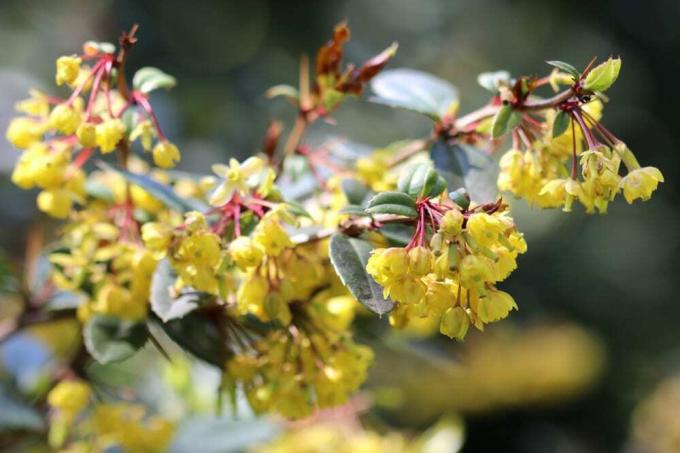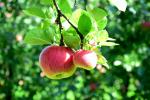

Table of contents
- Reasons for cleaning up
- Avoid self-seeding
- promote drive formation
- time
- Tool
- Instructions
- Maintenance cut/maintenance cut
- Grafted lilac/high standard
- lilac hedges
Hardly any other ornamental tree heralds spring more beautifully than the lilac. Because the Syringa vulgaris is particularly attractive in May, when the shrub presents its flowers in intense violet or white tones and exudes an intense scent in the home garden. The wilted buds aren't particularly attractive, but that's not the only reason they should be pruned.
Reasons for cleaning up
The many different types of pruning for the wood serve only one purpose: to keep the lilac shapely and floriferous. In addition to a planting cut, the growth cut and the training cut, which above all promote dense branching in order to obtain a harmonious shrub shape, there is also trimming. This means the removal of the faded flower. The cleaning not only serves a well-groomed appearance, but also has other advantages:
Avoid self-seeding
Practice shows that even uncut lilacs remain floriferous into old age. Therefore, faded flowers do not necessarily have to be cut out. Like many other profusely flowering ornamental trees, the common lilac (Syringa vulgaris) tends to self-seed. Wild forms in particular like to spread uncontrollably in the garden in this way in a short time. If you do not want lilacs to multiply en masse through seed production in the garden, you should definitely remove the flowers before the seeds ripen. Other types of lilac, such as the noble lilac, only develop sterile flowers and therefore cannot propagate by seed.
promote drive formation

Although it does not harm lilacs to leave the flowers on the bush once they have faded, the plant then puts a lot of energy into seed production in order to multiply. If the flowers are cut out, the lilac can fully concentrate on the development of the young shoots and the corresponding flowers in the following year. This is especially important for young trees that are still in the growth phase. The more energy a shrub can use to develop shoots and leaves, the more evenly and bushily it grows.
Tip:
In the case of large solitary trees of Syringa vulgaris, pruning can also be omitted. Flowering in the following year is hardly affected if old flowers remain on the bush.
time
Lilac is very tolerant of pruning. In general, however, a Syringa vulgaris grows best if it is cut as little as possible. In the case of young plants in particular, it is neither necessary nor sensible to cut back once a year. Similar to a variety of flowering shrubs, the lilac also forms the buds for the flowers in the previous year. So it needs time to develop and produce a bounty of buds. So if you cut after the planting of the flower buds in late summer to autumn, the flowers will fail in the following year. The best time for a cut is therefore right after the flowers have faded.
- late spring or early summer
- mid-May to late June
- before seed ripening
- rainless day
- morning
Tip:
If pruning was forgotten after flowering, you don't have to wait a whole year. A light care cut or corrections are possible until autumn.
Tool

As a rule, the shoots on the flowers are still very soft and can therefore be broken out. However, in order to avoid unnecessary injuries and large wounds, it makes sense to use suitable tools.
- only use sharp tools
- clean (disinfected with alcohol)
- Scissors for the flowers and thin branches
- Pruning shears or saw for thicker branches
Instructions
Lilac is one of the ornamental trees that are very tolerant of pruning. Despite this, the shrub rarely requires gardener intervention. Cut out the faded inflorescences as directly below the base of the flower as possible. Preferably choose the pair of buds directly below the flower as the starting point for the scissors or knife. If the branch is to be trimmed a little at the same time, at least three pairs of eyes must remain on the respective shoot. In this case, you should preferably cut just above an outward-facing pair of eyes. The resulting shoots make the shrub appear more voluminous and prevent too much shadow from being cast inside the crown. In this way you can prevent the lilac bush from becoming bare from the inside.
- directly below the base of the flower
- just above a pair of buds
- be sure to leave the new shoots below the blossom
- these shoots form the new buds for flowering the following year
The freshly cut surfaces are possible weak points into which germs and pathogens can penetrate. The quicker they close again, the less they pose a threat to the lilacs. The wounds should be allowed to dry quickly so that infections with fungi, viruses or bacteria do not occur via the wounds. This works best on a warm, rain-free day. If the weather is damp or there is a threat of rain, the cut should therefore be postponed to another day. The same applies to hot, sunny days. During this time, you should also not weaken the shrub by cutting it.
Tip:
Do not cut off the old buds too far down. The buds for the coming year are already on the newly sprouted branches.
Maintenance cut/maintenance cut
It is advisable to take a look at the branches of the lilac when you are cleaning out the inflorescences. If shoots are damaged or dead in winter or as a result of a storm, they should be removed, as should diseased branches. Occasionally, i.e. every two to three years, it may be necessary to cut back a few branches to maintain the beautiful shape. This so-called maintenance cut is quick and easy to carry out and is carried out on lilacs together with the removal of the faded flowers. Only:
- frozen, dead or damaged shoots
- old, dead shoots
- branches growing inwards
- one of two crossing branches
- weak, hardly leafy shoots
- possibly shorten individual older branches a little more
Grafted lilac/high standard

In the case of a grafted lilac or lilac trunk, the blooming crown is grafted onto a robust base. From time to time the rootstock produces so-called wild shoots. All these shoots below the grafting point must be removed promptly. The finishing point is usually located directly below the crown. It can be recognized by the slight thickening on the trunk where new, bulging tissue has formed. If you let the rootstock grow unchecked, in the worst case it can happen that the grafted crown is pushed off the plant and dies.
lilac hedges
If you have cultivated your fragrant lilac as a hedge, you should note that in Germany legal regulations must be observed when cutting hedge plants. Among other things, the Nature Conservation Act states that pruning is only permitted in the winter months. From 01. March to 30. September strong interventions in growth are not allowed. This is because nesting birds could be disturbed by these pruning measures. Although gentle care measures to eliminate the growth or remove the flowers are allowed, you should still making sure not to frighten nesting birds in the garden too much with your activity, and very cautiously proceed.
 Home editorial office
Home editorial office
Learn more about trees & shrubs

Corkscrew willow, Salix matsudana: 13 tips for care
The corkscrew willow is a popular garden tree due to its decorative growth. Especially in winter, the species has a special character that is created by the twisted branches. The maintenance effort for the ornamental tree is limited.

Cutting corkscrew willow: when is the right time?
The corkscrew willow only forms an attractive silhouette if its owner cuts it regularly. The right time for this care measure provides an overview and helps to get the crown in order in no time.

Barberry - care, pruning & propagation
Barberries have been banned from domestic gardens for decades because they serve as a winter host for the black rust fungus. Today, the easy-care and undemanding shrubs can be found more often in the garden. However, planting can be subject to conditions imposed by the Plant Protection Office.

Corkscrew hazel (Corylus avellana): care from A to Z
The care of the corkscrew hazel is not particularly complex. Once the tree has found the perfect location, it can live up to 100 years and reach considerable growth heights. The undemanding species can easily be propagated or regenerated if necessary.

Bush tree care: planting, planting spacing and pruning
The bush tree is a limited-growing tree that is ideal for smaller gardens. These low to medium-growing fruit trees are available in many varieties. In view of the rather small growth habit, a rich harvest can still be expected.

Caring for the box tree properly - that's how it's done
For a magnificent growth, the boxwood makes some demands in terms of care. Whether watering, fertilizing, cutting or overwintering, with the right care, it will delight plant lovers for many years to come. The professional care instructions show how it works.


